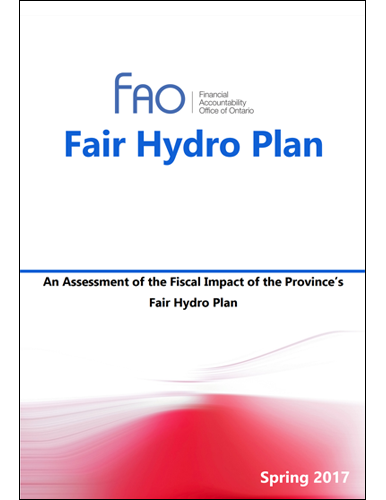An Assessment of the Fiscal Impact of the Province’s Fair Hydro Plan

This report reviews how Ontario’s Fair Hydro Plan (FHP) will impact electricity ratepayers and Provincial finances.
An Assessment of the Fiscal Impact of the Province’s Fair Hydro Plan, Financial Accountability Office of Ontario, 2017.

